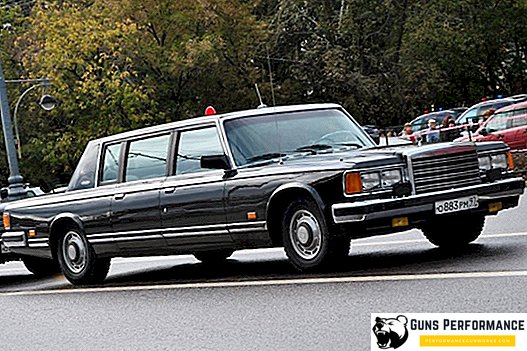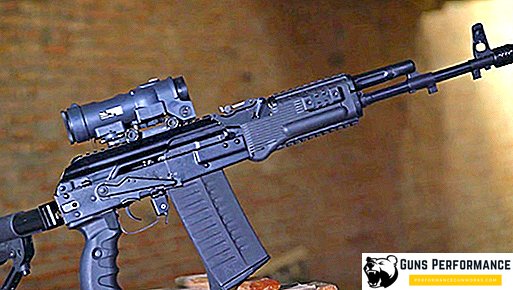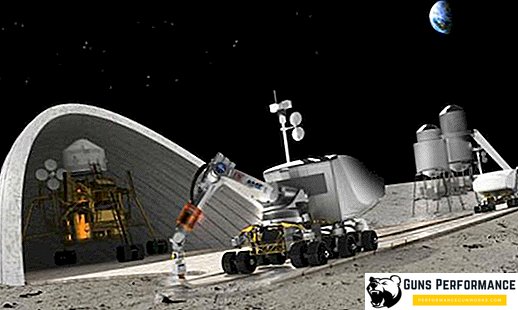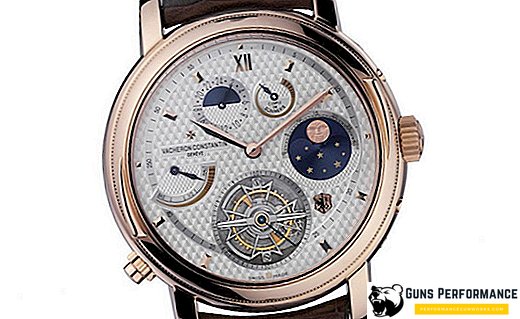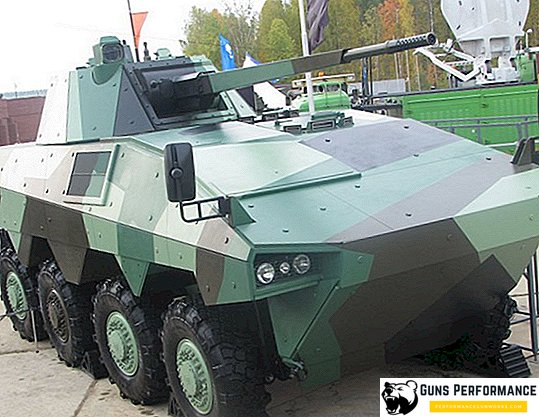The international policy of Western countries (primarily England) of the late XIX - early XX century, historians often call "gunboat diplomacy" (gunboat diplomacy) for the desire to solve foreign policy problems through the threat of the use of military force. If you follow this analogy, then the foreign policy of the United States and its allies of the last quarter of the twentieth century and the beginning of this century can be called "tomahawks' diplomacy". In this phrase, "tomahawk" means not the favorite weapon of the indigenous people of North America, but the legendary cruise missile, which the Americans have regularly used in various local conflicts for several decades.
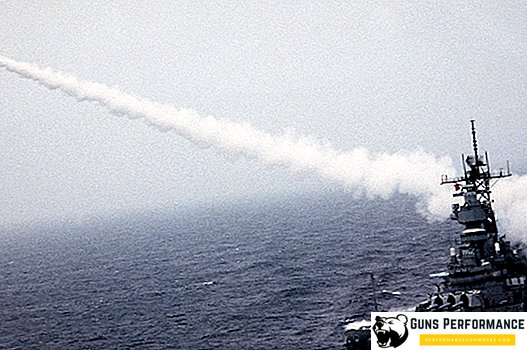
This missile system began to be developed in the first half of the 70s of the last century, it was adopted for service in 1983, and since then it has been used in all conflicts in which the United States participated. Since the adoption of Tomahawk, dozens of modifications of this cruise missile have been created, which can be used to defeat a variety of targets. Today, the fourth generation of BGM-109 missiles are in service with the US Navy, and their further improvement continues.
"Tomahawks" have been so effective that today they themselves are almost synonymous with a cruise missile. In different conflicts, more than 2,000 missiles were used, and despite some mistakes and failures, these weapons proved to be very effective.
A little about the history of the rocket Tomahawk
Any cruise missile (KR) is, in fact, a flying bomb (by the way, the first samples of this weapon were called so), a single-use unmanned aerial vehicle.
The history of the creation of this type of weapon began in the early 20th century, before the beginning of the First World War. However, the technical level of the time did not allow the manufacture of existing systems.
The appearance of the first serial cruise missile is due to humanity the gloomy Teutonic genius: it was launched into a series during the Second World War. "V-1" took an active part in the hostilities - the Nazis used these KR for strikes on the territory of Great Britain.
"V-1" was equipped with an air-jet engine, its warhead weighed from 750 to 1000 kilograms, and the range reached from 250 to 400 kilometers.
The Germans called the V-1 "weapon of retaliation", and it really was very effective. This rocket was simple and relatively cheap (compared to the V-2). The price of one product was only 3.5 thousand Reichsmarks - approximately 1% of the cost of a bomber with a similar bomb load.
However, no "miracle weapon" could not save the Nazis from defeat. In 1945, all the Nazi developments in the field of rocket weapons fell into the hands of the Allies.
In the USSR, Sergei Korolev was involved in the development of cruise missiles immediately after the end of the war, then Vladimir Chelomey, another talented Soviet designer, worked in this direction for many years. After the start of the nuclear era, all work in the field of creating missile weapons immediately acquired the status of strategic ones, since it was missiles that were considered the main carrier of weapons of mass destruction.

In the 1950s, the USSR was developing two-stage intercontinental cruise missile, the Burya, which was designed to deliver nuclear warheads. However, the work was stopped for economic reasons. In addition, it was during this period that real success was achieved in the field of the development of ballistic missiles.
In the USA, the SM-62 Snark cruise missile with an intercontinental range was also developed; it was even on alert for some time, but was later removed from service. It became clear that in those days, ballistic missiles proved to be a much more effective means of delivering a nuclear charge.
The development of cruise missiles in the Soviet Union continued, but now before the designers put some other tasks. Soviet generals believed that such weapons were an excellent means of fighting the ships of a potential enemy, and their American carrier strike groups (AUG) were particularly worried.
Enormous resources were invested in the development of anti-ship missile weapons, thanks to which the Granit, Malachite, Mosquito and Onyx anti-ship missiles appeared. Today, the Russian Armed Forces have the most sophisticated models of anti-ship cruise missiles, and no other army in the world has anything like this.
Creation of "Tomahawk"
In 1971, American admirals inspired the beginning of the development of sea-based strategic cruise missiles (SLCMs) with the ability to launch from submarines.

Initially, it was supposed to create two types of KR: a heavy missile with a range of up to 5500 km and launch from a SSBN rocket launchers (55 inches in diameter) and a lighter version that could be launched directly from torpedo tubes (21 inches). Light KR should have a range of 2500 kilometers. Both rockets had a subsonic flight speed.
In 1972, the lighter rocket was chosen and the developers were given the task of creating a new SLCM (Submarine-Launched Cruise Missile) rocket.
In 1974, for the demonstration launches, two of the most promising CDs were selected; they turned out to be projects of the companies General Dynamics and Ling-Temco-Vought (LTV). Projects were given the abbreviations ZBGM-109A and ZBGM-110A, respectively.
Two launches of the product created in LTV ended in failure, so the General Dynamics rocket was declared the winner, and work on the ZBGM-110A was stopped. The revision of the CD has begun. In the same period, the leadership of the US Naval Administration decided that the new missile should be able to start from surface ships, therefore the meaning of the acronym (SLCM) was changed. Now the developed missile system was called Sea-Launched Cruise Missile, that is, a sea-based cruise missile.

However, this was not the last introduction, which faced the developers of the missile complex.
In 1977, the American leadership initiated a new program in the field of missiles - the JCMP (Joint Cruise Missile Project), whose goal was to create a single (for the Air Force and Navy) cruise missile. During this period, airborne CDs were actively developing, and combining the two programs into one became the reason for using the Williams F107 single engine and identical navigation system in all the missiles.
Initially, the sea rocket was developed in three different versions, the main differences of which were their combat unit. A variant with a nuclear warhead, an anti-ship missile with a conventional warhead and a spacecraft with a conventional warhead, designed to strike ground targets was created.
In 1980, the first tests of a naval modification of the rocket were carried out: at the beginning of the year, a rocket was launched from a destroyer, and a little later the Tomahawk was launched from a submarine. Both launches were successful.

Over the next three years, more than a hundred launches of "Tomahawks" of various modifications took place; according to the results of these tests, a recommendation was issued on the acceptance of the missile complex for armament.
Navigation System BGM-109 Tomahawk
The main problem of using cruise missiles against objects located on land was the imperfection of guidance systems. That is why cruise missiles for a very long time were practically synonymous with anti-ship weapons. Radar guidance systems perfectly distinguished surface ships against a smooth sea surface, but they were not suitable for the destruction of ground targets.
Creating a guidance system and course correction TERCOM (Terrain Contour Matching) was a real breakthrough, making it possible to create a Tomahawk rocket. What is this system and on what principles does it work?
The work of TERCOM is based on the reconciliation of the altimeter data with a digital map of the earth's surface embedded in the onboard computer of the rocket.

This gives Tomahawk several advantages at once, which made this weapon so effective:
- Flight at extremely low altitude with rounding of the terrain. This ensures high secrecy of the rocket and the complexity of its destruction by means of air defense. Tomahawk can only be discovered at the last moment, when it is too late to do something. It is equally difficult to see the rocket from above against the background of the earth: the range of its detection by aircraft does not exceed several tens of kilometers.
- Full autonomy of the flight and targeting: To correct the course Tomahawk uses information about the uneven terrain. You can deceive a rocket only by changing it, which is impossible.
However, there are TERCOM system and disadvantages:
- The navigation system cannot be used above the water surface; prior to the start of the flight over land, the CU is controlled with the help of gyros.
- The effectiveness of the system decreases over a flat low-contrast terrain, where the elevation difference is insignificant (steppe, desert, tundra).
- A fairly high value of the circular probable deviation (CEP). It was about 90 meters. For missiles with nuclear warheads, this was not a problem, but the use of conventional warheads made such an error problematic.

In 1986, an additional navigation system and flight correction DSMAC (Digital Scene Matching Area Correlation) was installed on Tomahawks. From that very moment, the Tomahawk of a thermonuclear Armageddon weapon turned into a threat to all who dislike democracy and do not share Western values. New modification of the missile received the name RGM / UGM-109C Tomahawk Land-Attack Missile.
How does DSMAC work? The cruise missile enters the attack zone using the TERCOM system, and then begins to verify the images of the terrain with digital photographs embedded in the onboard computer. Using this method of guidance, the rocket can get into a separate small building - the KVO of the new modification has decreased to 10 meters.
Cruise missiles with a similar guidance system also had two modifications: Block-II attacked a chosen target on a low-level flight, while Block-IIA made a slide and swooped down on an object before hitting a target, and could also be remotely undermined directly above it.
However, after installing additional sensors and increasing the mass of the warhead, the RGM / UGM-109C Tomahawk's flight range decreased from 2500 km to 1200. Therefore, in 1993 a new modification appeared - Block-III, which had a reduced warhead mass (while maintaining its power) and more perfect engine, which increased the range of Tomahawk to 1600 km. In addition, Block-III was the first missile to receive a guidance system using GPS.

Modifications "Tomahawks"
Taking into account the active use of Tomahawks, the US military leadership has set the manufacturer a task to significantly reduce the price of its product and improve some of its characteristics. This is how the RGM / UGM-109E Tactical Tomahawk, adopted in 2004, appeared.
This rocket used a cheaper plastic case, a simpler engine, which almost halved its cost. At the same time, the "Ax" has become even more deadly and more dangerous.
The rocket used more advanced electronics, it is equipped with an inertial guidance system, a TERCOM system, as well as DSMAC (with the possibility of using infrared terrain images) and GPS. In addition, the tactical Tomahawk uses a two-way UHF satellite communication system, which allows you to retarge the weapon right in flight. The camera installed on the CD provides an opportunity to assess the state of the target in real time and make decisions on the continuation of an attack or strike on another object.
Today Tactical Tomahawk is the main modification of the missile, which is in service with the US Navy.
The next generation Tomahawk is currently being developed. The developers promise to eliminate in the new rocket the most serious drawback inherent in the current modifications: the inability to hit moving sea and land targets. In addition, the new "Ax" will be equipped with modern millimeter-wave radar.
BGM-109 Tomahawk Application
"Tomahawk" was used in all conflicts of recent decades, in which the United States participated. The first serious test for this weapon was the 1991 Gulf War. During the Iraq campaign, almost 300 KRs were released, the overwhelming majority of whom successfully completed the assignment.
Later, the Kyrgyz "Tomahawks" were used in several smaller operations against Iraq, then there was a war in Yugoslavia, the second Iraqi campaign (2003), and also the operation of NATO forces against Libya. "Tomahawks" were used during the conflict in Afghanistan.
Currently, the BGM-109 missiles are in service with the US and British armed forces. Holland and Spain showed interest in this missile system, but the deal never took place.

Device BGM-109 Tomahawk
The Tomahawk cruise missile is a monoplane equipped with two small folding wings in the central part and a cruciform stabilizer in the tail section. The cylindrical fuselage. The rocket has a subsonic flight speed.

The body consists of aluminum alloys and (or) special plastic of low radar visibility.
The control and guidance system is combined; it consists of three components:
- inertial;
- by terrain (TERCOM);
- electron-optical (DSMAC);
- using GPS.
On anti-ship modifications worth radar guidance system.
To launch rockets from submarines, torpedo tubes (for old modifications) or special launchers are used. For launching from surface ships use special launchers Mk143 or UVP Mk41.
At the head of the KR is the flight guidance and control system, followed by the warhead and fuel tank. At the rear of the rocket is a twin-turbojet engine with a retractable air intake.
The accelerator is attached to the tail end, which gives the initial acceleration. He takes out a rocket to an altitude of 300-400 meters, after which it is separated. Then the tail fairing is reset, the stabilizer and wings open, the main engine turns on. The rocket goes to a given height (15-50 m) and speed (880 km / h). This speed is quite small for a rocket, but it allows the most economical use of fuel.

The warhead of the missile can be very different: nuclear, semi-slaughter, high-explosive frag, cassette, penetrating or concrete-slaughter. The mass of warheads of different versions of the rocket is also different.
Advantages and disadvantages of BGM-109 Tomahawk
"Tomahawk" - this is undoubtedly a highly effective weapon. Universal, cheap, able to solve many problems. Of course, he has flaws, but there are many more advantages.
Advantages:
- due to the low altitude and the use of special materials "Tomahawks" are a serious problem for air defense systems;
- rockets have very high accuracy;
- these weapons are not subject to cruise missile agreements;
- KR "Tomahawk" have a low maintenance cost (when compared with ballistic missiles);
- this weapon is relatively cheap to manufacture: the cost of one rocket for 2014 was $ 1.45 million, for some modifications it can reach $ 2 million;
- versatility: various types of combat units, as well as various methods of defeating objects, allow Tomahawk to be used against various targets.

If you compare the cost of using these KRs with conducting a full-scale air operation using hundreds of aircraft, suppressing enemy air defenses and installing interference, then it will seem just ridiculous. The current modifications of these missiles can quickly and effectively destroy stationary objects of the enemy: airfields, headquarters, warehouses and communications centers. Tomahawks were also used very successfully against the civilian infrastructure of the enemy.
Using these rockets, you can pretty quickly drive the country "into the stone age", and turn your army into an unorganized crowd. The task of "Tomahawks" is to deliver a first strike against the enemy, to prepare the conditions for further work of aviation or military invasion.
There are current modifications of the "Ax" and disadvantages:
- low flight speed;
- the range of the conventional missile is lower than that of the CD with a nuclear warhead (2500 vs. 1600 km);
- inability to attack moving targets.
You can also add that the CD can not maneuver with large overloads to counter air defense systems, as well as use false targets.
At the moment, work on the modernization of the cruise missile continues. They are aimed at extending the range of its flight, increasing the warhead, and also to make the rocket more "smarter." The latest modifications of the Tomahawks, in fact, are real UAVs: they can patrol in a given area for 3.5 hours, choosing the most worthy “victim” for themselves. In this case, all the data collected by the sensors of the Kyrgyz Republic are transmitted to the control point.
Technical characteristics of BGM-109 Tomahawk
| Firing range, km: | |
| when launching from a surface ship (BGM-109C / D) | 2500 |
| when launched from a surface ship (BGM-109A) | 1250 |
| when launching from a submarine | 900 |
| Maximum flight speed, km / h | 1200 |
| Average flight speed, km / h | 885 |
| Length m | 6,25 |
| Rocket body diameter, m | 0,53 |
| Wingspan, m | 2,62 |
| Starting weight, kg: | |
| BGM-109A | 1450 |
| BGM-109C / D | 1500 |
| Боевая часть: | |
| BGM-109A | ядерная |
| BGM-109С | полубронебойная - 120кг |
| BGM-109D | кассетная - 120кг |


